A Feel-Good Reality Check at Copenhagen Fashion Week's Spring 2026 Season
This season wasn't about an It bag or a standout silhouette, really. It was about what effective style can actually do.
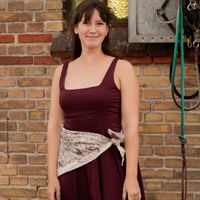
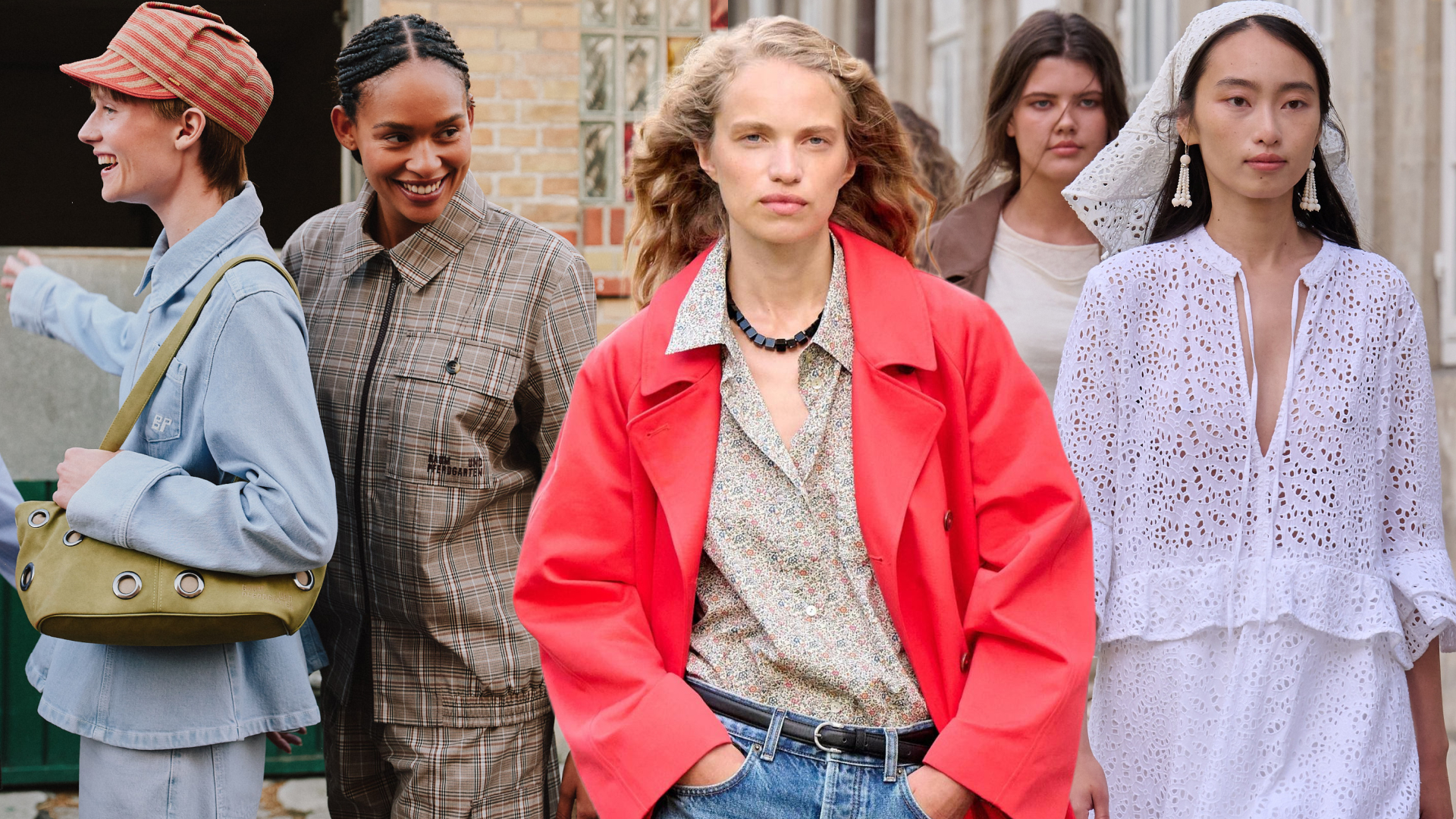
On the second night of Copenhagen Fashion Week’s Spring 2026 season, one hundred or so fashion people had their eyes trained on Pamela Anderson. She was surrounded by orchids and candlelight and ancient-seeming marble busts, presiding over a dinner at the heart of the city’s Glyptoteket art museum, dressed in a black Khaite sheath dress and a smattering of Pandora jewelry. (She’s an ambassador.) A sea of phone lights blazed in her direction as she welcomed guests to her fashion week dinner.
Pamela Anderson sightings aren’t all that common at Copenhagen Fashion Week, and people naturally wanted their followers to know they were breathing rarefied air. But in all the “there’s a celebrity here!” excitement, I wondered if attendees caught the moment Anderson unintentionally delivered the thesis statement of the entire spring calendar. “Copenhagen,” she said, “always feels like a palette cleanser.”
I knew Anderson was talking less about the spring runways and more about the general sense of taking ease she felt arriving in the city between stops on a recent press tour. Still, as the week unfolded, it felt like she’d precisely summed up the energy of 44 shows and presentations held over the four-day program. (And, by extension, the way people dressed outside them.)
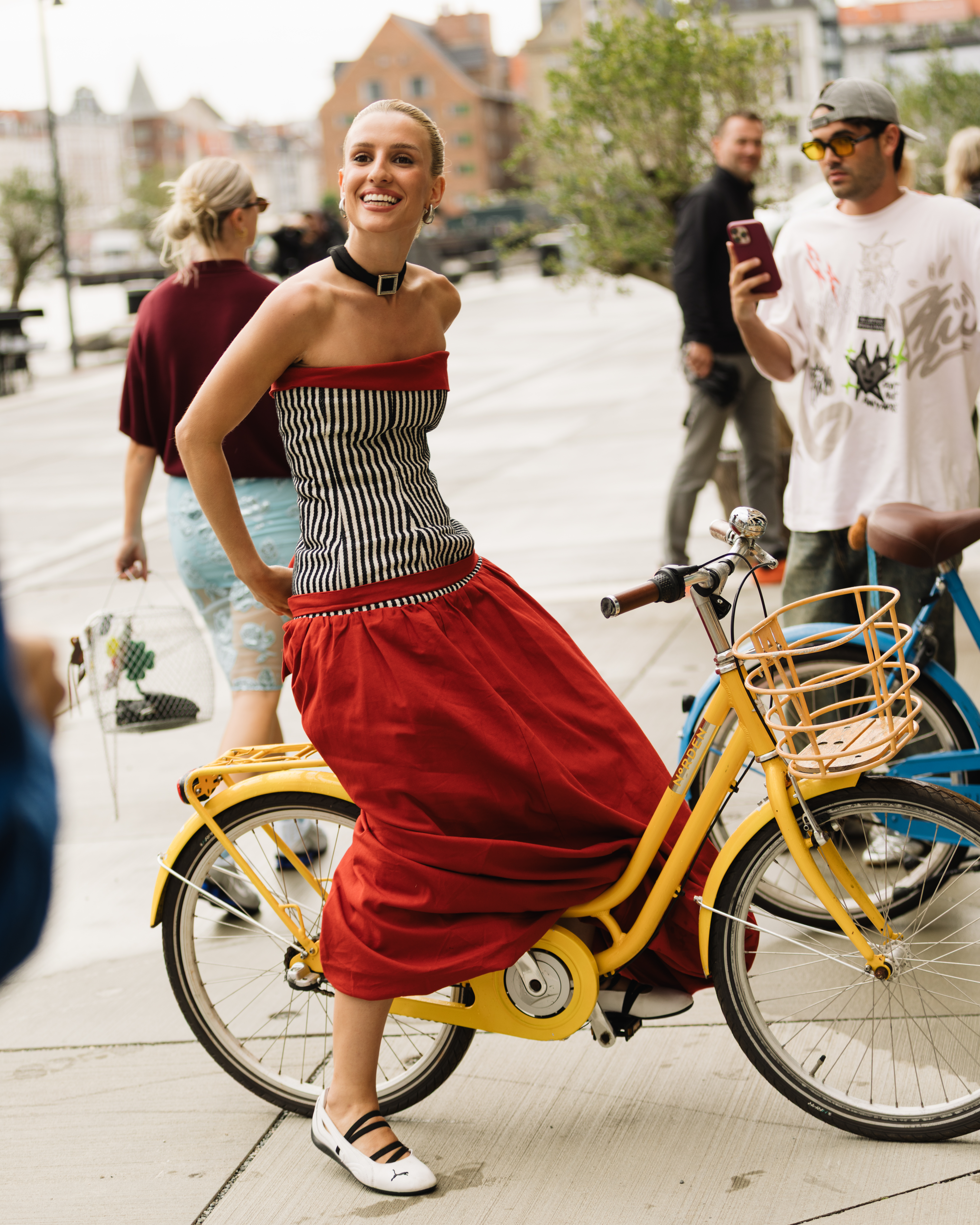
A guest at Copenhagen Fashion Week embodying the runways' overarching ethos: a mix of personality and practicality.
The fashion world has had an unusually loud, busy summer. Houses surprise-swapped creative directors and staged aesthetic-resetting debut shows; alarm bells rang out over declining earnings and tariff-induced volatility; in the time it took me to wrap a scarf belt around my waist, trend prognosticators were telling me to untie it and move on. Copenhagen Fashion Week’s spring season arrived to hit pause on all those distractions, and end the relentless churn of newness for newness’ sake.
Returning designers, on the eve of Copenhagen Fashion Week’s twentieth anniversary year in 2026, presented collections that turned up the volume on their greatest hits instead of chasing or inventing trends. Practicality was as important as personality—and while the visual language shifted from equestrian plaids at Baum und Pferdgarten to beach minimalism at The Garment, the takeaway was the same. Familiarity and functionality aren’t shorthand for risk-aversion or being overly “commercial.” (That’s industry shorthand for the gaffe of creating things people who aren’t one-percenters want to buy.) But actually, those principles are the foundation great style can arise from. And if people are wearing it, why re-make it?
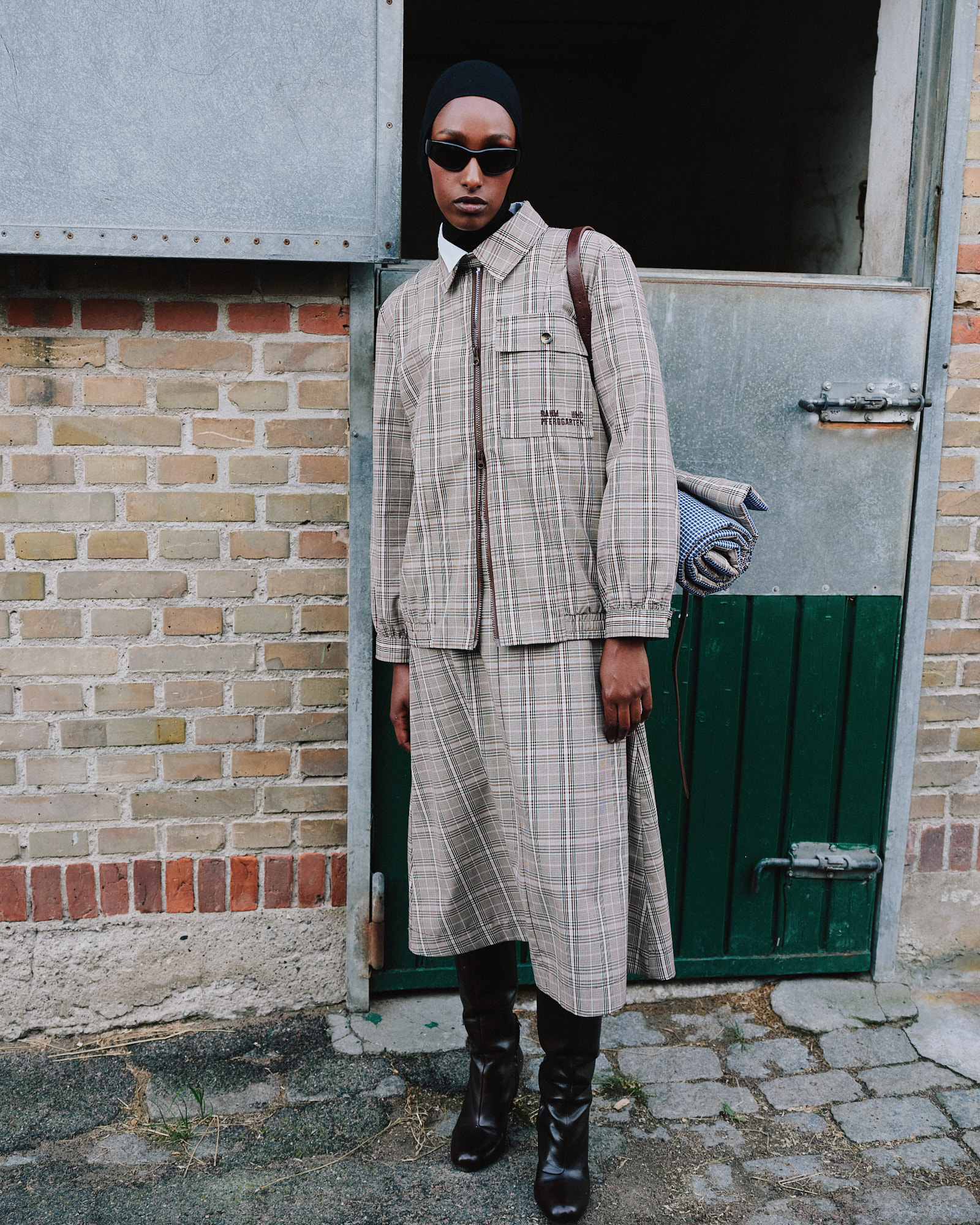
Equestrian plaids and matching sets ruled Baum und Pferdgarten...
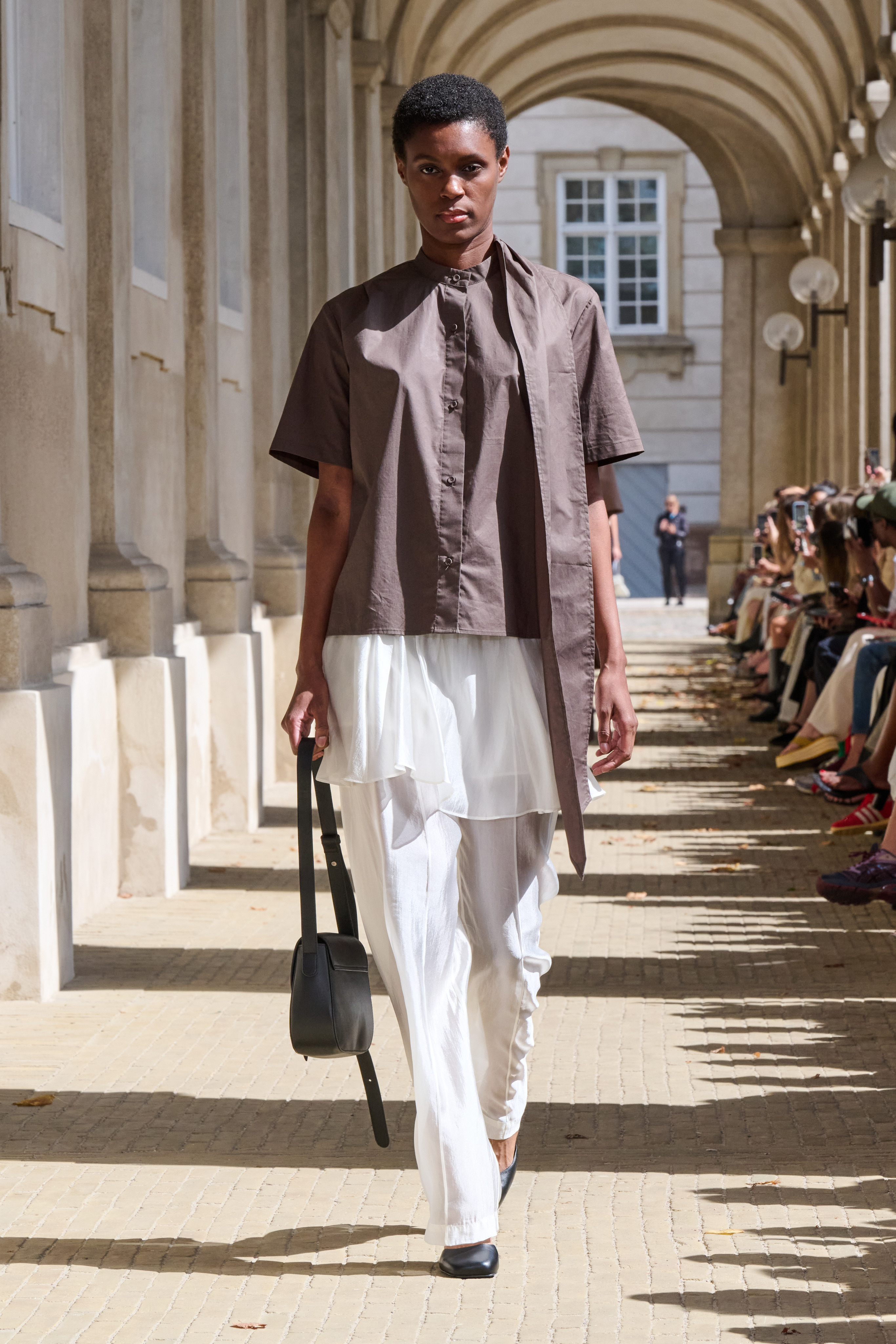
...while The Garment was dominated by serene neutrals and oversize shapes.
The obvious example is Cecilie Bahnsen’s Copenhagen Fashion Week homecoming: a tribute to her first decade as a standalone designer taking shape through a re-issuing and reimagining of her weightless, puff-sleeve and ribbon-topped dresses. All were paired with Asics sneakers, the same combination she wore for her debut in 2015 and took her bow in this week, while two long rows of guests mirrored the same look. It’s the opposite of basic, but it’s completely comfortable: I clocked several guests riding up to the show on bikes in in their cotton candy-skirts and dresses.
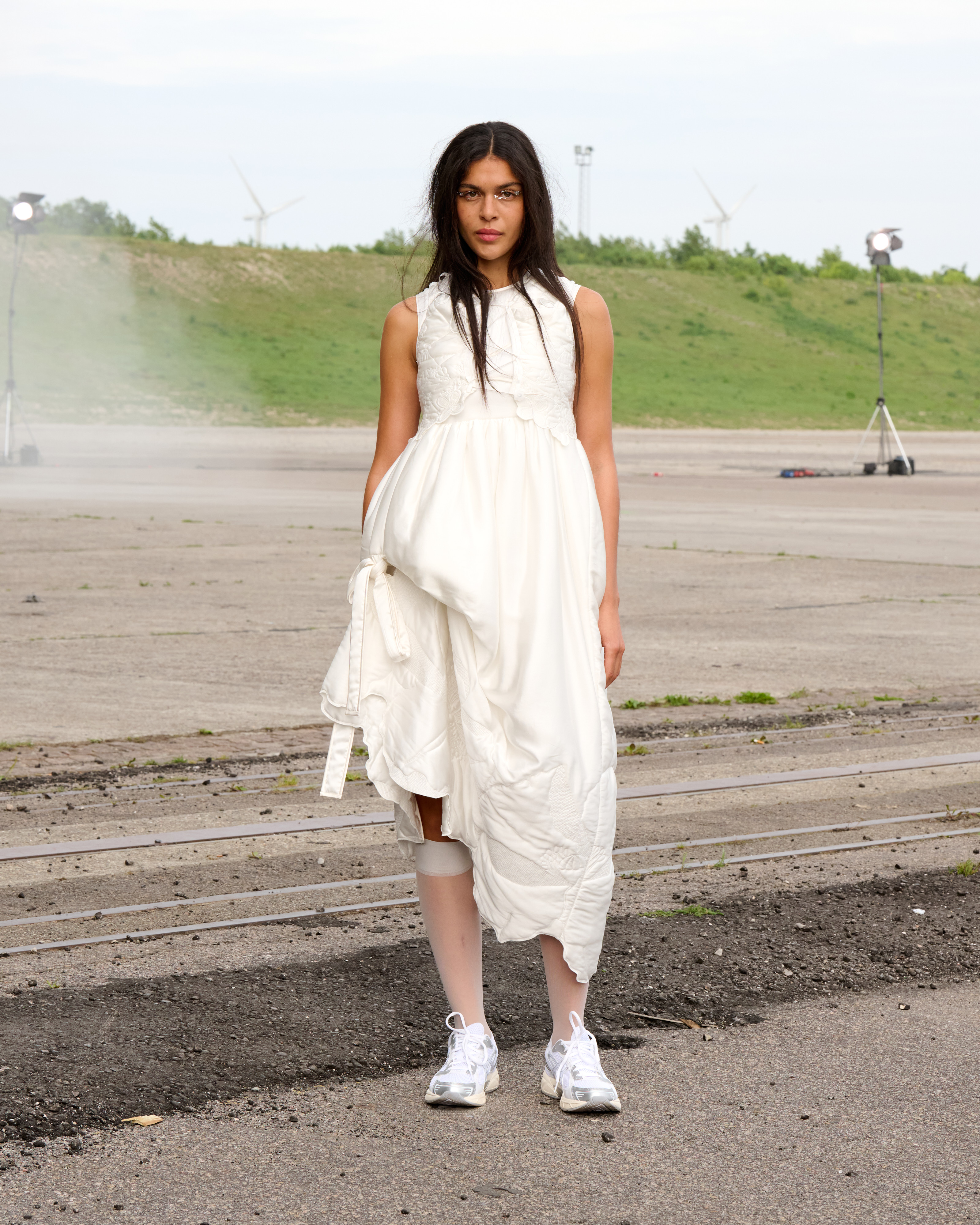
The Cecilie Bahnsen woman returned on a cloud of high-volume dresses and sneakers.
Sisters and Skall Studio founders Julia and Maria Skall’s show notes said their collection was an attempt to trade “performance” for letting go. It’s a reference to how dancers move, but also how it feels to sit back from online trend cycles and let your own tastes guide you. The label introduced some eco-conscious cactus and Sicilian orange leather for their handbags, and creatively triple-layered button-down shirts (one around the waist, two worn as manufactured). But the standouts were of an understated variety: an oversized lace skirt and shirt with a coordinating bandana hair scarf, or a brilliant carnation red trench over a Liberty floral top and precisely proportioned jeans.
Get exclusive access to fashion and beauty trends, hot-off-the-press celebrity news, and more.
“The pieces we love most are the ones that move with the body—soft tailoring, sun-washed tones, and natural fabrics,” the co-founders told me. “It’s very close to how we dress in our everyday lives: effortless, calm, and rooted in presence.”
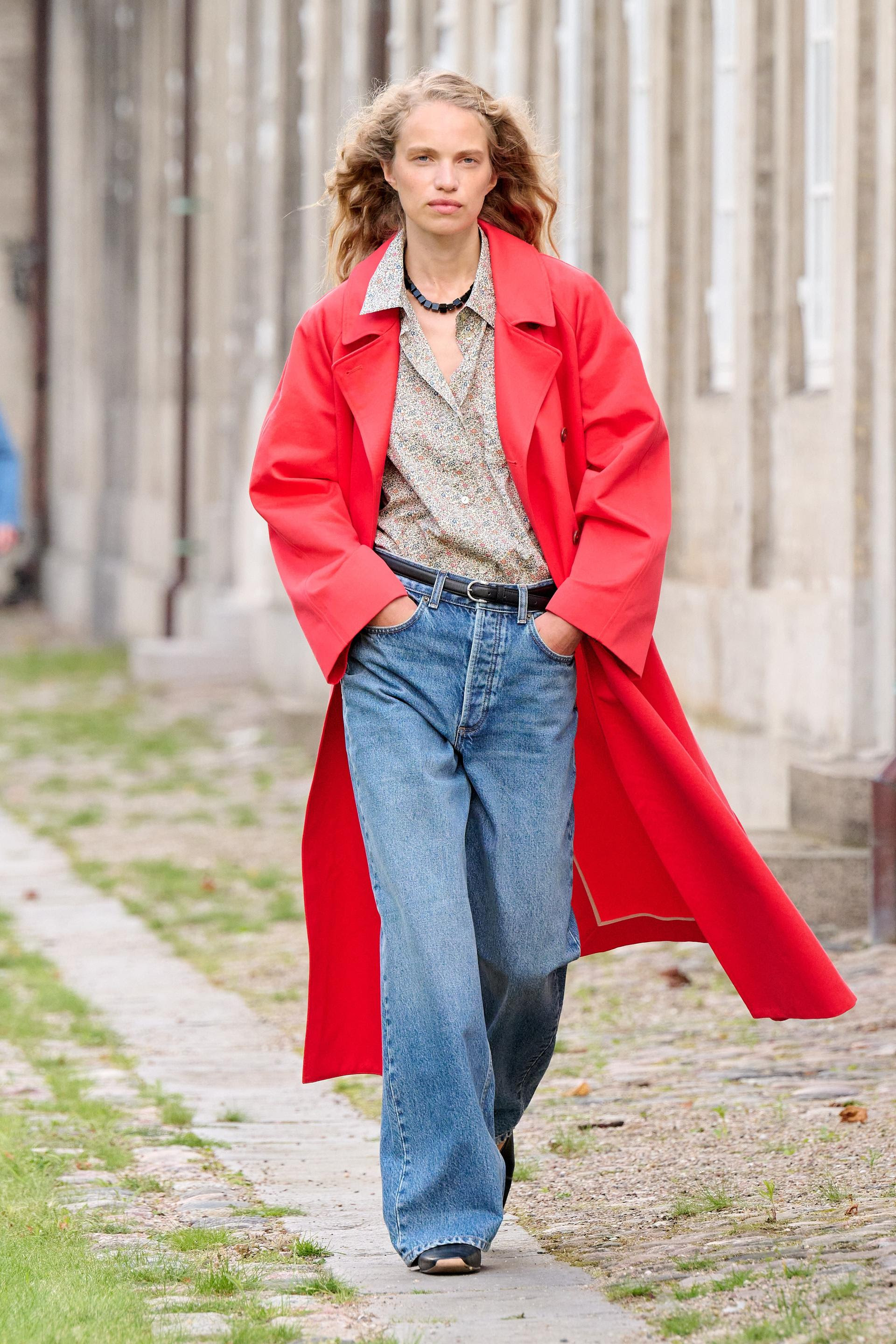
A Skall Studio standout: this poppy-red trench and jeans.
MKDT Studio creative director Caroline Engelgaar, too, looked at her real life to influence the label’s latest takes on three-piece tailored suits and woven dresses, in a palette of slate blue, khaki, and black. She referred to her inspirations as a “patchwork carpet” of what’s happening in her world, from spending time in her garden to hearing her children make funny remarks at home. “It is a blend of experiences that I always tie back to our core identity at MKDT Studio—our DNA—and what we do best: tailored design, craftsmanship, and a commitment to quality,” she explained. The runway still got a little freaky with headbands and ties made to look like they’d been caught in a gust of wind, but the outfits beneath them never got swept away on overly unusual or unwearable details.
“Marimekko’s design philosophy revolves around crafting timeless, functional, and high-quality products that provide long-lasting joy to people, so presenting at Copenhagen Fashion Week feels like a natural fit for us,” creative director Rebekka Bay said after this season’s lineup of candy-colored striped polos and flower-printed dresses. Once again, the emphasis on bouquet-bright shift dresses wasn’t a design shift.
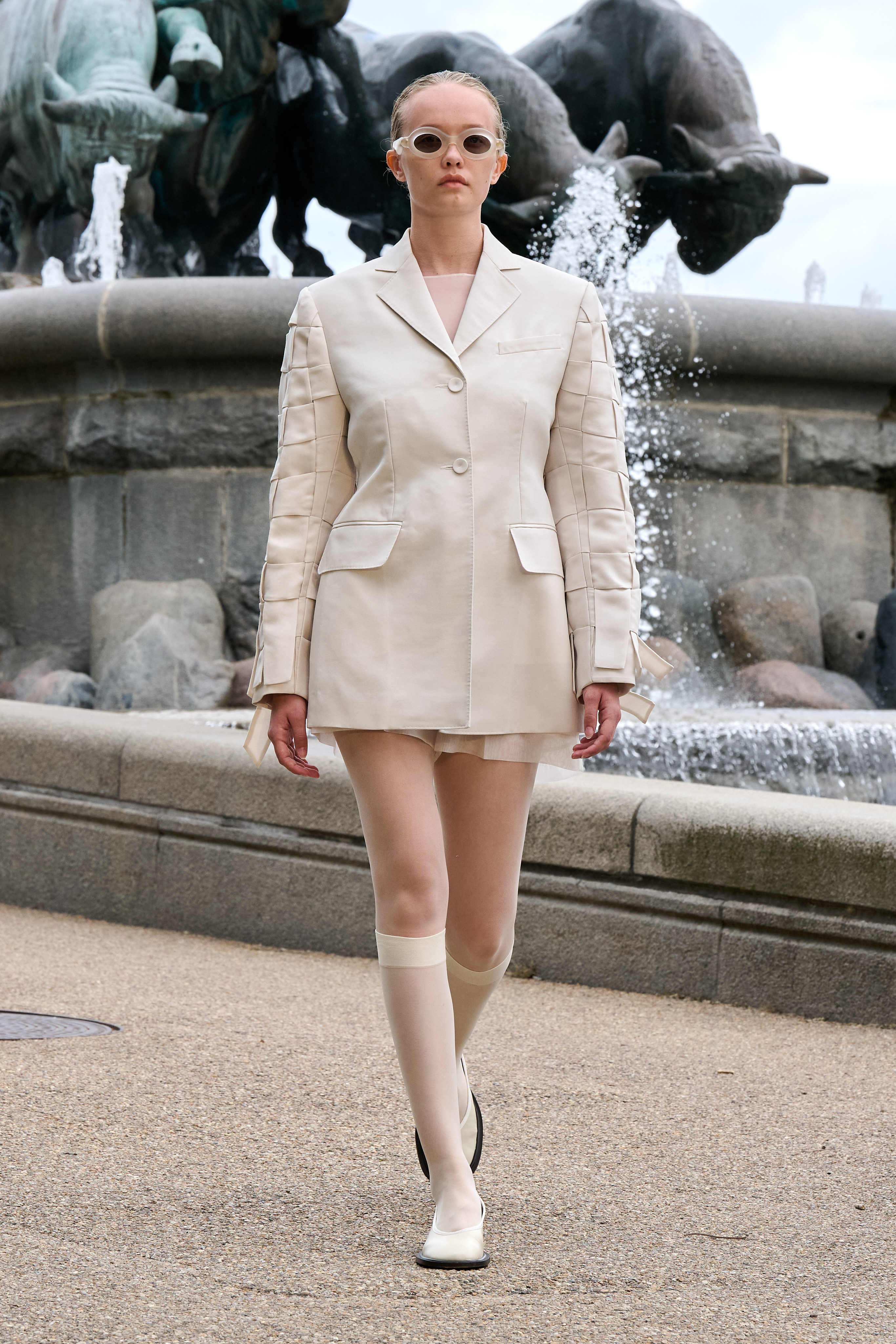
MKDT Studio stayed true to the calm neutrals and sleek accessories its fans love.
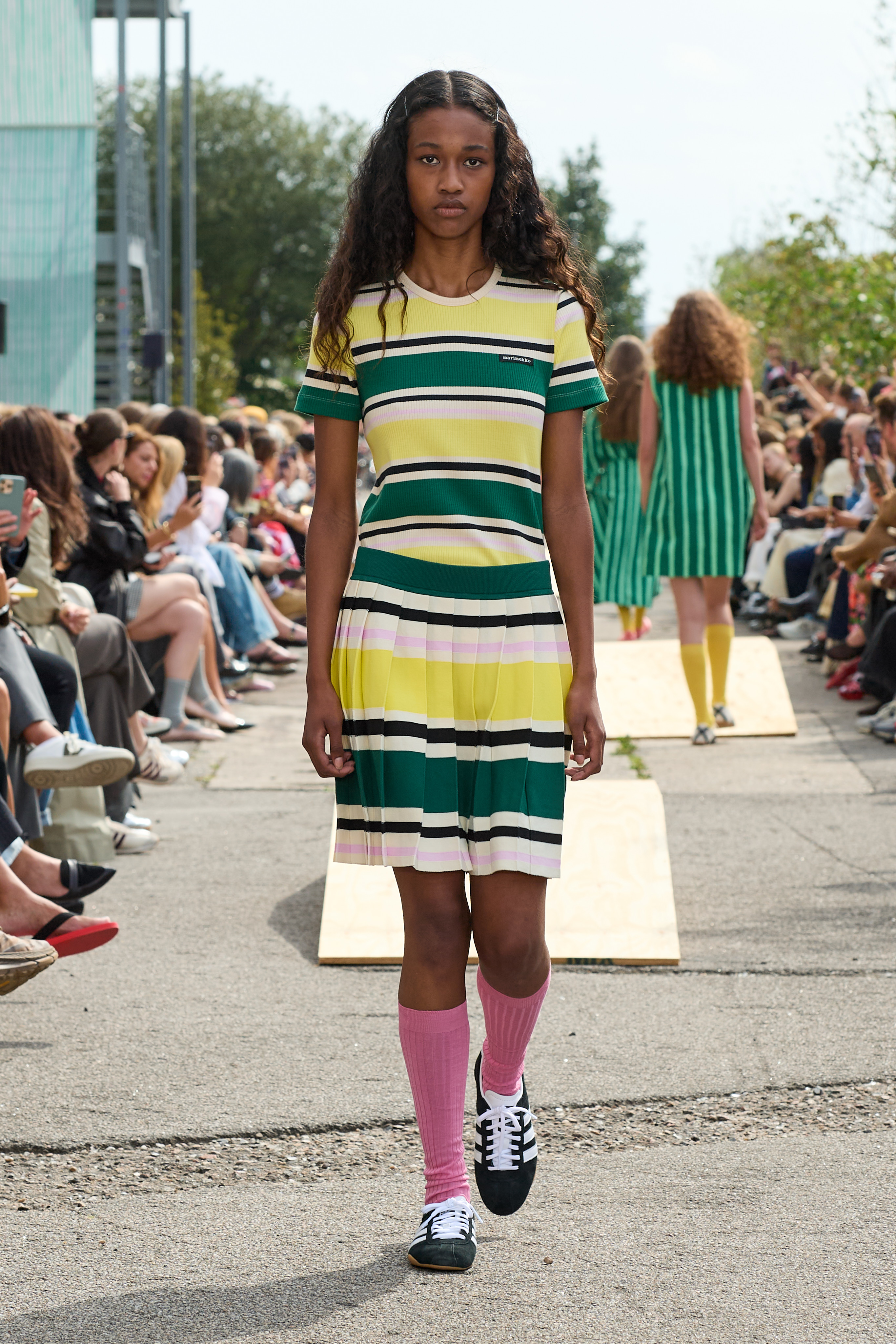
At Marimekko, models combined familiar stripes and saturated colors with Adidas Tokyo sneakers.
That runway also had a surprise guest: Adidas Tokyo sneakers paired to each look with knee-high pastel socks. I overheard more than one editor mentioning they’d take that styling tip home (and they wouldn’t necessarily need new sneakers to do it). Similarly, several designers teamed up with international shoe brands: a way to dial up contrast while keeping the styling accessible. Last season’s breakout Puma Speedcat Ballerina styling at OpéraSport turned into a Havaianas flip-flop collaboration for the brand, worn with everything from jeans and itty-bitty swim tops to ruffled two-tone dresses.
Nicklas Skovgaard, a designer whose pieces have lately embraced by Tracee Ellis Ross and Lily-Rose Depp, designed clog sandals with Dr. Scholl's to accompany each of his avant-lounge looks. I could see other A-list clients picking them up—or modeling the same aura with sandals they already have.
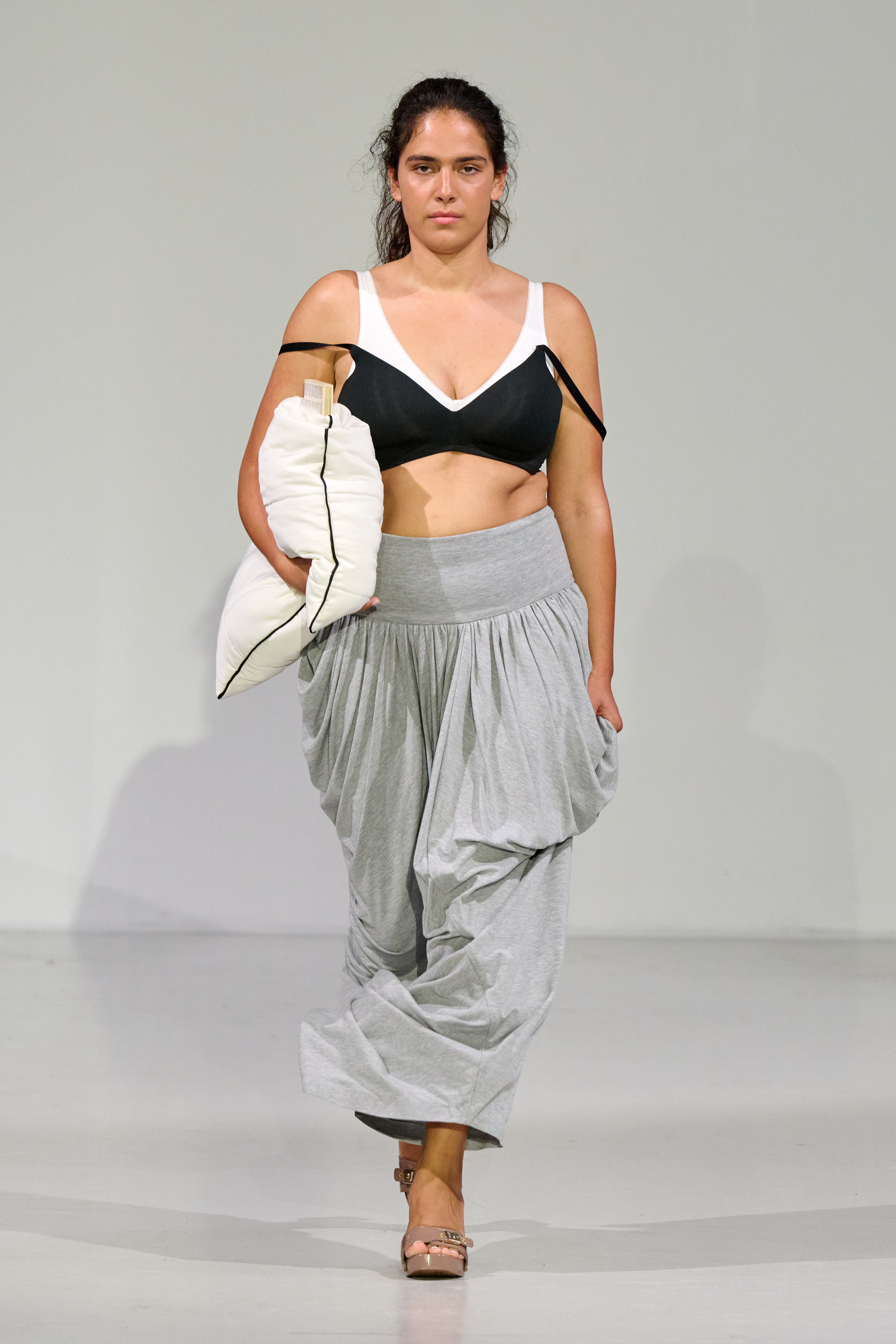
At Nicklas Skovgaard, a collection that was an ode to bed-adjacent dressing also featured sandals designed with Dr. Scholl's.
Caroline Bille Brahe doubled up on collaborative efforts at Caro Editions’ runway, referencing her wedding with 80s mixed prints and Karl Lagerfeld-reminiscent closing lace bridal sets. With each look, she swapped last season’s deadstock Chanel boots for New Balance sneakers. Each pair was tied twice: first with the original laces, and then with a polka-dot bow that grazed the cobblestone street. Some models also carried purses from a collaboration with Mulberry: vintage bags reworked with Caro-coded bows and charms. She called it “an invitation to carry history in a way that feels entirely new.” I read it as a cheeky reminder that bag trends carry on—so don’t hurry to replace last season’s or the one before.
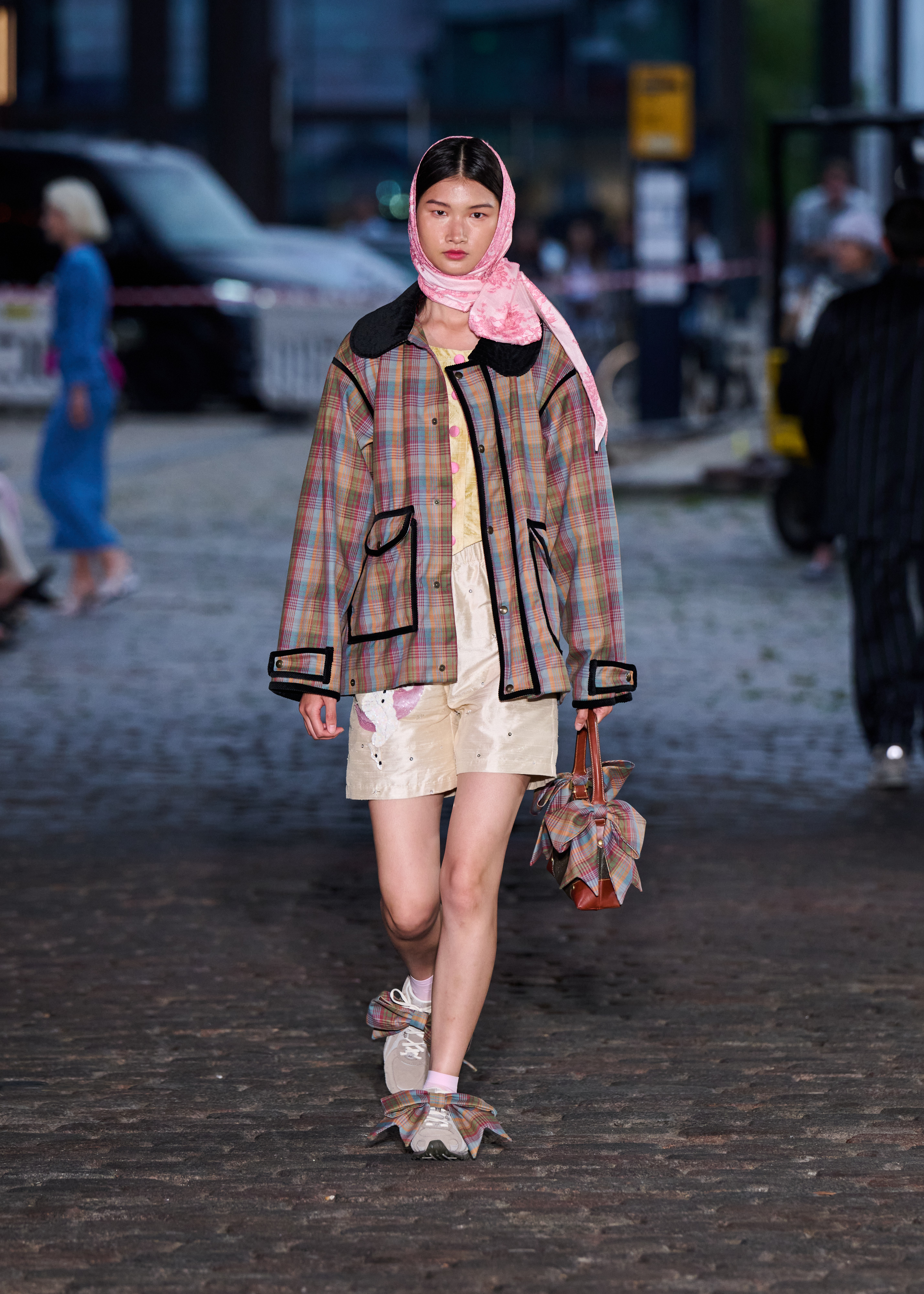
Caro Editions models paired Mulberry collaboration bags with bow-topped New Balance sneakers.
From show to show, the particulars of the woman at the fore changed ever so slightly: elegant wardrobe essentials at Birrot, freaked-out corporate wear at Bonnetje, Each one said: Here are examples of having a style and taste refined over several seasons, and here are runway casts who reflect the people living their lives in these clothes beyond the runway.
Inclusive casting by size, age, race, and ability are still a top priority in Copenhagen. Mid-week, I received texts from two friends who work in other industries but still caught wind of Rave Review’s show, where the cast featured a model who uses a wheelchair. And crucially, her dress and top were stylistically aligned with every other look—no compromises.
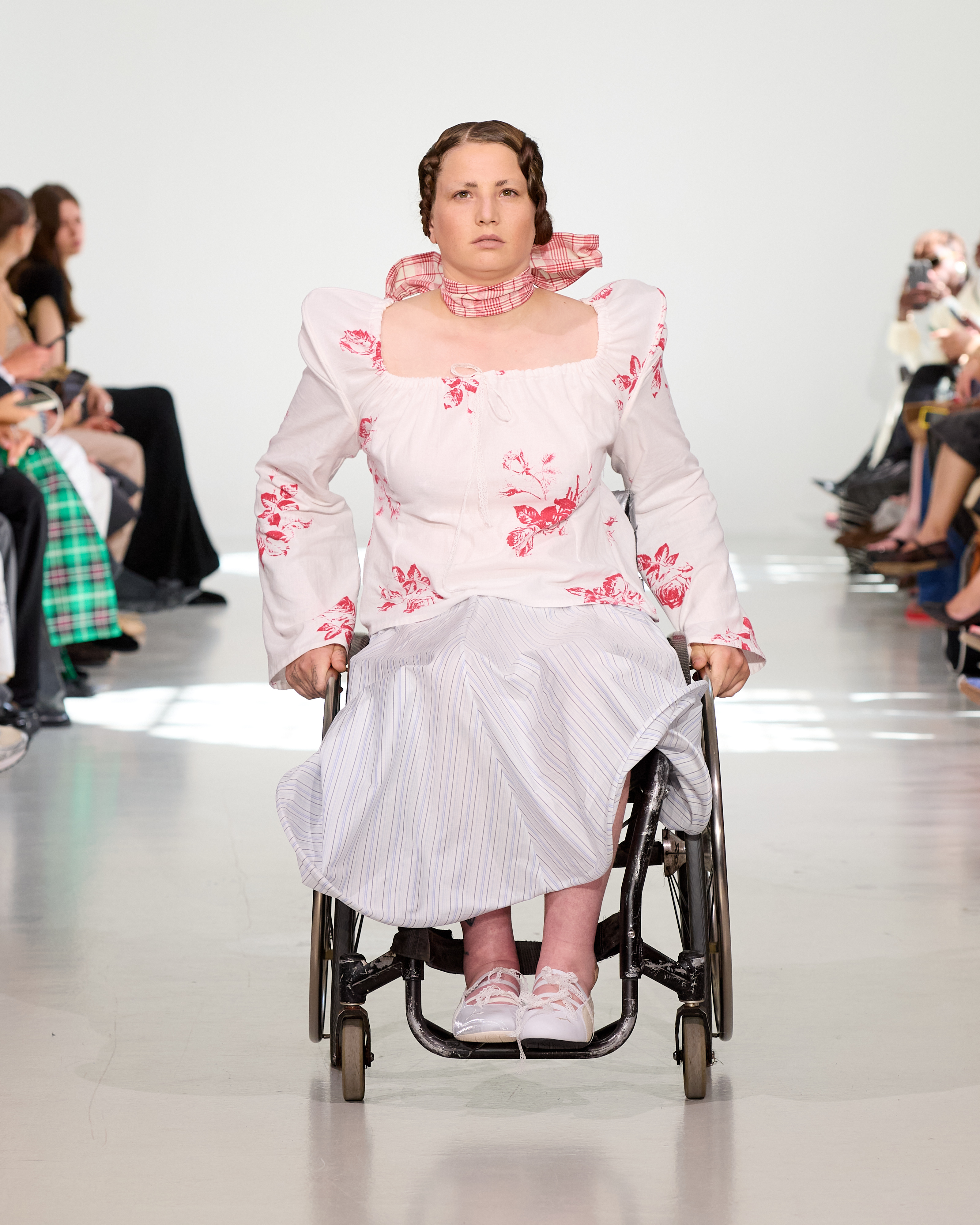
Rave Review's subversive florals and inclusive casting also earned, well, rave reviews.
I suspect, as I’ve written in past seasons, that this sensibility comes in part from so many of Copenhagen’s designers being working moms. They understand which features garments need to stand up to reality, because they live it while they run their businesses. Like their shoppers, they bike between shows and chase around their families. This season's profusion of easily layerable separates and pliable-yet-pretty textures say this cohort excels at putting the fun in functional design.
I could have combed through every runway still to write a list of trends from the past week. There were occasional through-lines like polka dot prints, intentionally undone lingerie dressing, and basket-weave inspired textures. But realistically, it’s too early to define what everyone will be wearing, or thinking about wearing, next spring.
Besides, I get the sense Copenhagen designers don’t necessarily want anyone taking a trend away from their market. (It’s somewhat antithetical to their sustainability framework, after all.) They want to show you how to live in your wardrobe, perhaps with a piece or two from a new collection, or perhaps from something you already own, love, and could ostensibly style again. The exact pieces were new, but the styling was unpretentious even when it had big ideas—nothing was designed just for the sake of showing it on a runway or seeing it go viral online. In an industry where attention spans are shorter than hot pants, this was a refreshing change.
Pamela Anderson was right: My palette’s been cleansed.
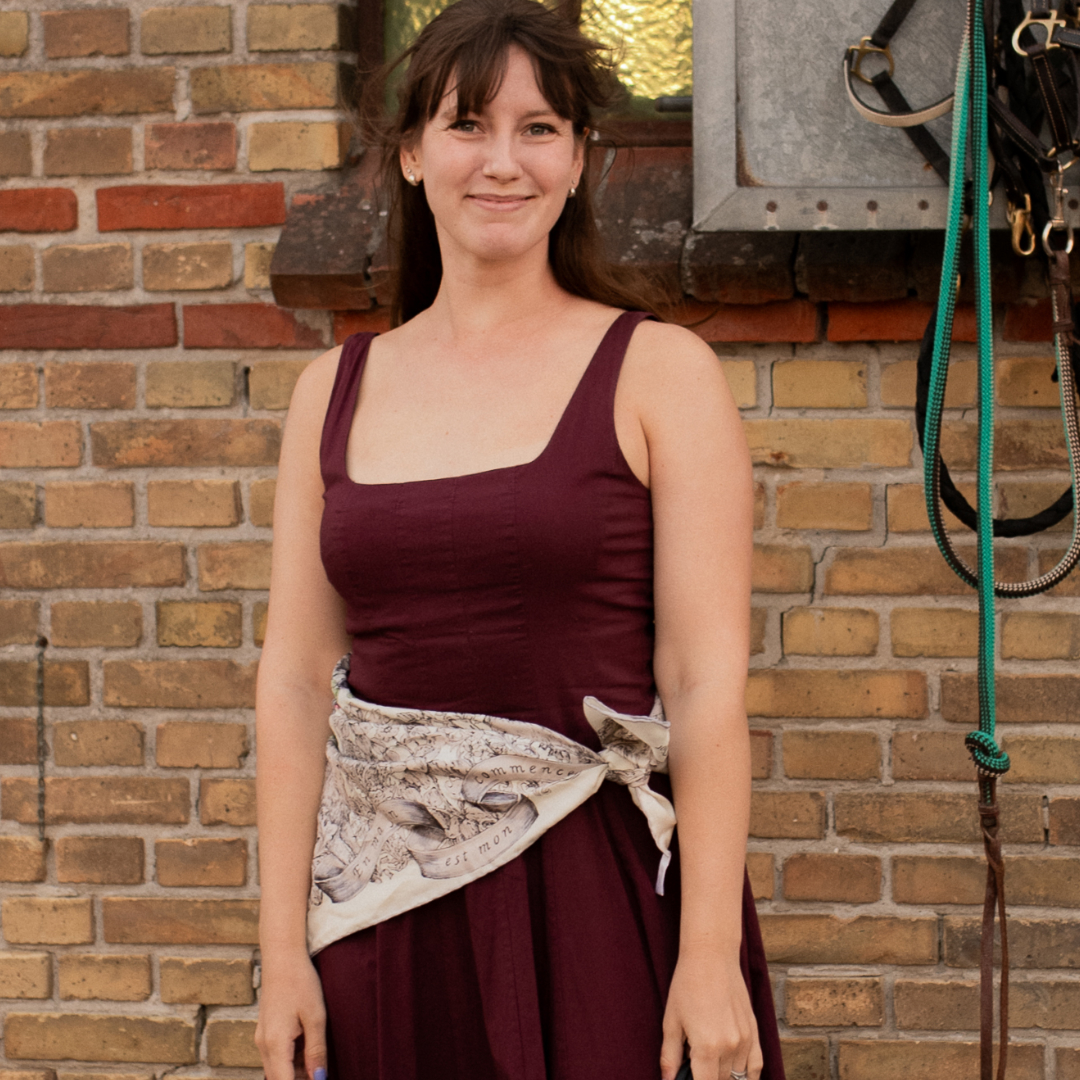
Halie LeSavage is the senior fashion news editor at Marie Claire, leading coverage of runway trends, emerging brands, style-meets-culture analysis, and celebrity style (especially Taylor Swift's). Her reporting ranges from profiles of beloved stylists, to exclusive red carpet interviews in her column, The Close-Up, to The A-List Edit, a newsletter where she tests celeb-approved trends IRL.
Halie has reported on style for eight years. Previously, she held fashion editor roles at Glamour, Morning Brew, and Harper’s Bazaar. She has been cited as a fashion expert in The Cut, CNN, Puck, Reuters, and more. In 2022, she earned the Hearst Spotlight Award for excellence in journalism. She holds a bachelor’s degree in English from Harvard College. For more, check out her Substack, Reliable Narrator.